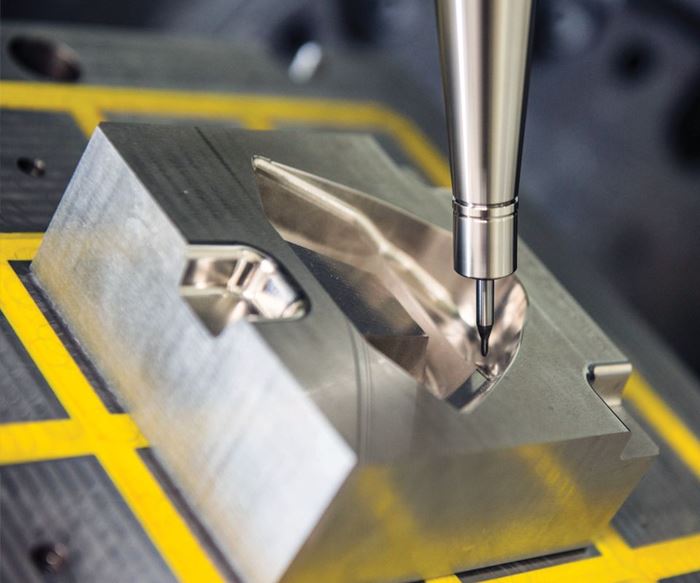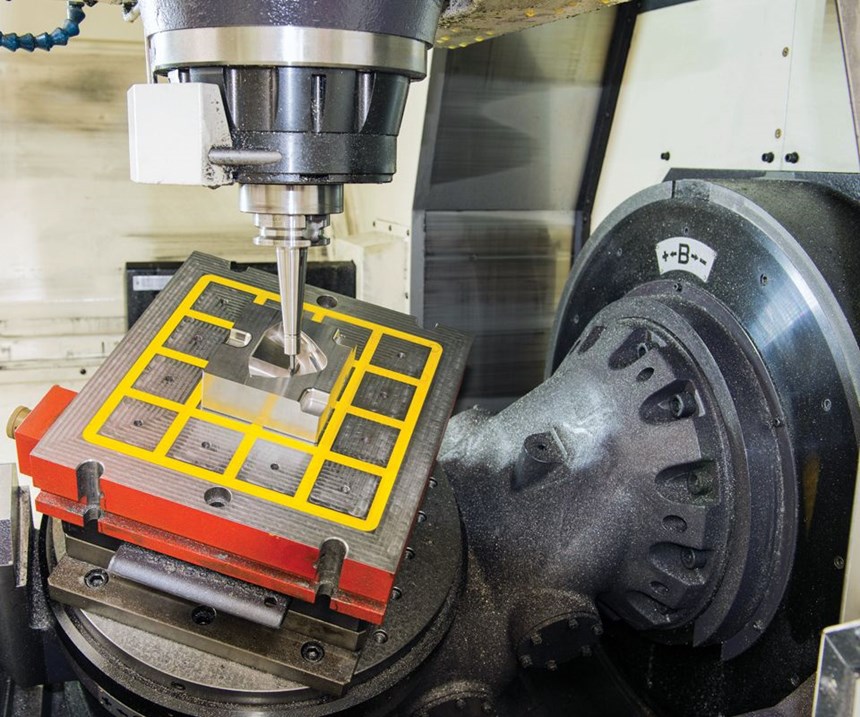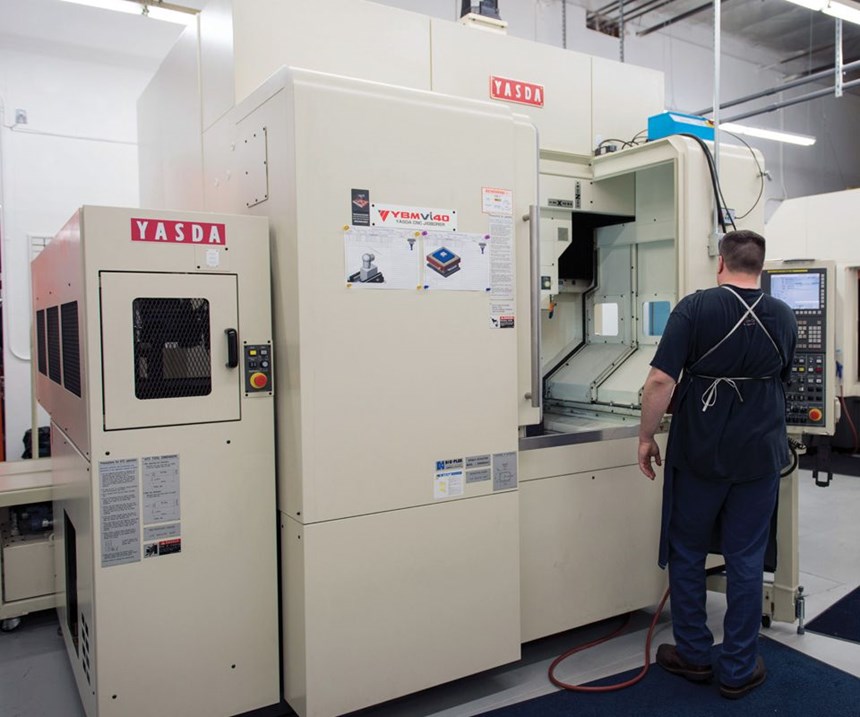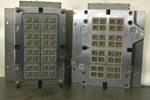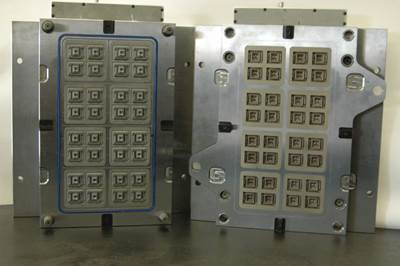Five-Axis Machining Eliminates LSR Flash
Sometimes taking a different view of a problem can bring about a successful solution.
Sometimes taking a different view of a problem can bring about a successful solution. Rick Finnie, owner and president of M.R. Mold & Engineering Corp. of Brea, California, has been working with silicone and liquid silicone rubber (LSR) molds since the early eighties. Molding silicone is a specialized process that requires that the molds be built with high-precision machinery. After experiencing inefficiencies with conventional three-axis machines in his moldmaking operation, Finnie looked to five-axis machining as a means to achieve higher quality, higher precision tools.
Conquering Liquid Silicone Rubber
In addition to fast cure cycles, LSR has a low compression set (ASTM D395), which is the permanent deformation remaining when a force that was applied to it is removed. That, coupled with great stability, means LSR can resist extreme heat and cold. It remains flexible and elastic to temperatures as low as -70°F and retains its properties to those as high as 550°F. This makes the material well-suited for the production of parts, particularly those for the medical industry, where quality and accuracy are critical.
Building LSR molds requires a different mindset, however. Many thermoplastic materials can be molded with limited flash using fit specifications between inserts ranging to 0.0002 inch, but LSR will often flash even with fit requirements as tight as 0.0001 inch or less. This necessitates a different level of engineering, machining, processing precision and expertise.
Over the years, M.R. Mold has invested in several CNC mills as well as wire and sinker EDMs to meet the needs of its growing business. The company’s core customers require close tolerances, little to no flash and cosmetically perfect parts—difficult to achieve with conventional three-axis CNC machines.
“We were machining complex 3D cores and cavities on conventional three-axis mills where feeds, speeds and surface finish were being compromised. The EDM process was often required, as the three-axis mills were unable to accurately perform the needed machining operations,” Finnie explains. Additionally, three-axis machining sometimes required as many as five setups for some of the complex geometries. This process wasted valuable time and introduced errors with each new operation, compromising accuracy.
Achieving a high level of accuracy on molds with complex geometries using three-axis equipment was difficult and led to multiple reworks once the molds were sampled and evaluated in the press. The main culprit: parting-line flash, a major issue with silicone molds.
Finnie knew the time had come to make an investment in a five-axis machine.
The Five-Axis Solution
After a candid conversation with a friend who owned a Yasda machine, Finnie reached out to Methods Machine Tools in Sudbury, Massachusetts, and saw the Yasda YBM Vi40 in the Methods Technology Center. He realized this five-axis vertical CNC jig-boring/milling machine offered the high accuracy M.R. Mold needed.
The Vi40 includes a simultaneous-five-axis cone-machining circularity of 2.32 microns, 0.89-micron positioning accuracy of the Y axis, and indexing accuracies of ±0.50 second on the B axis and ±0.20 second on the C axis. The machine also features a symmetric bridge-type structure and single-piece, high-grade cast iron construction, including the column and top beam, which increases the machine’s rigidity, enabling the heavy-duty machining that is often required in mold manufacturing. A 24,000-rpm, 40-taper direct-drive spindle adds to precision, and a thermal distortion stabilizing system maintains the X, Y and Z axes and B/C rotational axes to ±0.2o°C of shop ambient temperature. Temperature-controlled oil circulates through the machine to minimize thermal displacement of each axis.
According to Finnie, 70 percent of the molds that M.R. Mold builds have complex geometries, and, as a result of these machine features, the Yasda enables the shop to achieve highly accurate mold surface finishes and eliminate parting-line flash.
“The YBM Vi40 produces surface finishes that meet extremely tight tolerances and do not require secondary finishing operations, making complete net-shape machining in one operation possible. Also, the machine offers five-sided machining in a single setup,” he says. Its ability to machine undercut cavities also has eliminated costly EDM work. On a recent mold build, Finnie says the machine saved the shop 40 hours in extra setup time and 40 hours of machining and polishing time.
Despite all of these other benefits, however, Finnie says the machine’s greatest value to M.R. Mold is that it made the shop’s biggest challenge—holding tight flash tolerances—a thing of the past.
Related Content
Speed, Productivity Gains and High Uptime Ease Decision for Second Five-Axis Machine
Byrne Tool + Design reduced setups and gained speed and productivity thanks to fast, accurate and compact five-axis CNC machining centers.
Read MoreThree Good Reasons to Switch from Three- to Five-Axis Machining in Moldmaking
Five-axis machining technology is a great tool in the moldmaker toolbox.
Read MoreHow to Eliminate Chatter
Here are techniques commonly used to combat chatter and guidelines to establish a foundation for optimizing the moldmaking process.
Read MoreRead Next
The LSR Learning Curve
This increasingly popular thermoset material follows very different rules than any plastic.
Read MoreAre You a Moldmaker Considering 3D Printing? Consider the 3D Printing Workshop at NPE2024
Presentations will cover 3D printing for mold tooling, material innovation, product development, bridge production and full-scale, high-volume additive manufacturing.
Read MoreReasons to Use Fiber Lasers for Mold Cleaning
Fiber lasers offer a simplicity, speed, control and portability, minimizing mold cleaning risks.
Read More
